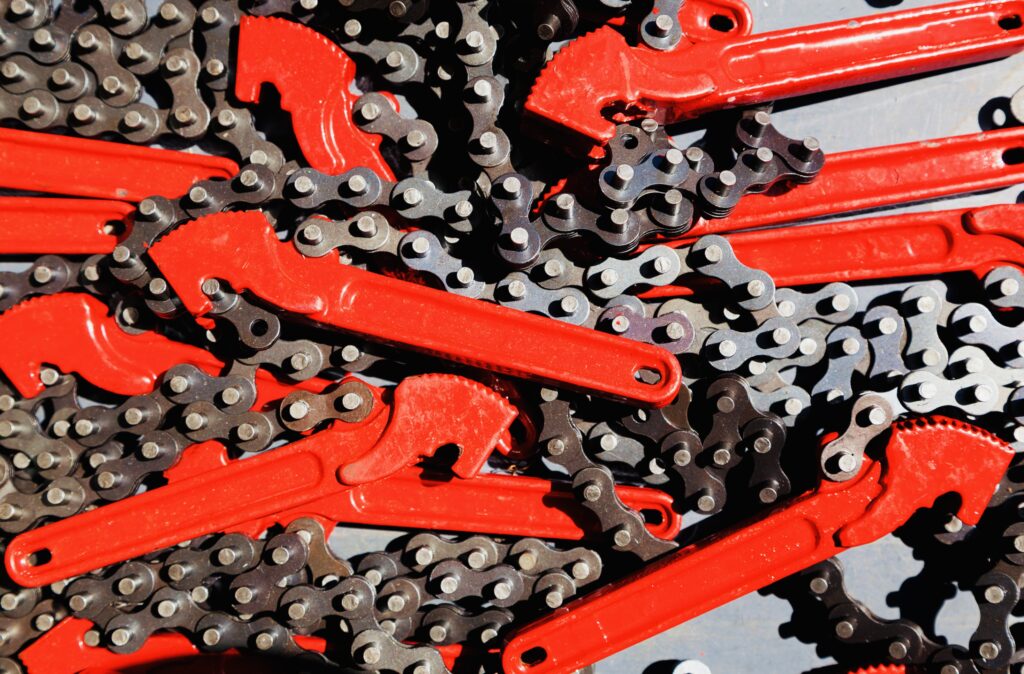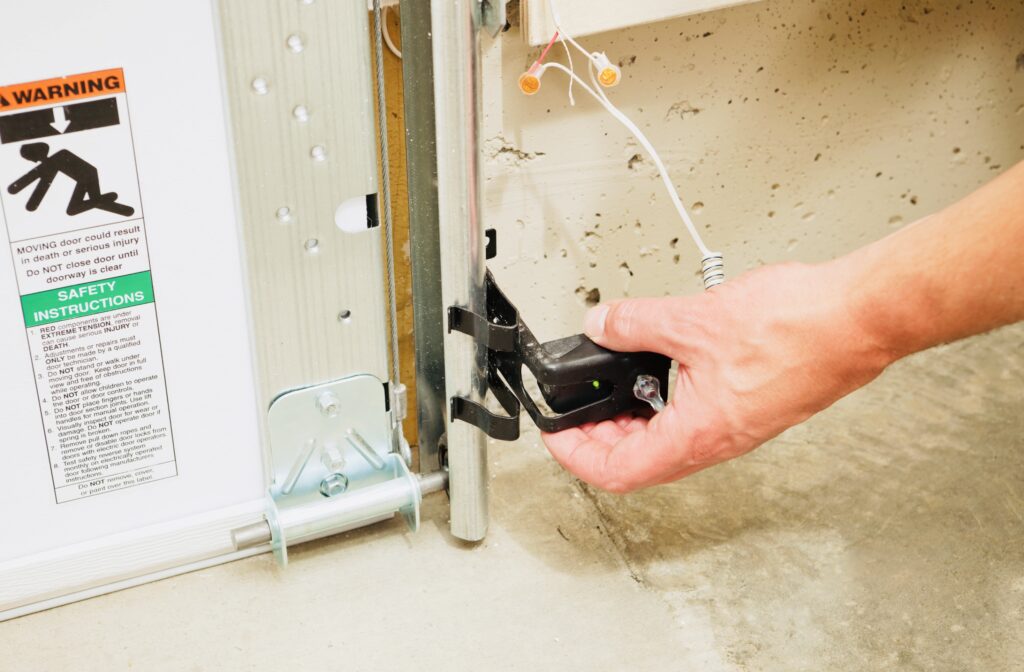Mastering the Art of How To Tighten The Garage Door Chain: A Comprehensive Guide
The smooth operation of your garage door relies on a well-maintained chain mechanism. If you’ve noticed slack or unusual movements in your garage door, it might be time to know How To Tighten The Garage Door Chain.

In this guide, we’ll walk you through the step-by-step process of tightening your garage door chain, ensuring optimal performance and longevity.
The Way to Understand the Issue in Garage Door Chain
Before diving into the tightening process, it’s essential to understand signs that indicate a loose or malfunctioning garage door chain. Common indicators include erratic door movements, unusual noises during operation, or visible sagging in the chain. Identifying these issues early on can prevent further damage to your garage door system.
Let’s Unravel The Signs of Trouble In Your Garage Chain:
Erratic Door Movements
Garage doors should move smoothly and without sudden jerks or hesitations. If you observe erratic movements, such as sudden stops or uneven lifting, it could be indicative of a problem with the chain.
Unusual Noises During Operation
Pay attention to the sounds your garage door makes during operation. A properly functioning chain should produce minimal noise. If you notice excessive rattling, grinding, or clanking sounds, it may signal a loose or misaligned chain.
Visible Sagging in the Chain
A visual inspection of the garage door chain is crucial. Check for any noticeable sagging or slack in the chain when the door is in the closed position. A taut and properly tensioned chain is essential for optimal door performance.
Inconsistent Door Closing and Opening
Your garage door should open and close consistently without interruptions. If you experience delays, halting, or uneven motion, it’s a clear indication that the chain might need attention.
Difficulty in Manual Operation
Attempt to open and close the garage door manually. If you encounter resistance or the door feels unusually heavy, the chain may not be functioning correctly. Manual operation should be smooth and relatively effortless.
Visual Inspection of Chain Components
Take a close look at the garage door chain components. Check for signs of wear, damage, or misalignment. Pay attention to the links, sprockets, and tension adjuster for any visible issues.
Testing Door Balance
A well-balanced garage door is essential for the proper functioning of the chain. Disconnect the opener and manually lift the door to the halfway-open position. If the door doesn’t stay in place or feels imbalanced, it may indicate chain-related issues.
Listening for Unusual Sounds
During the door’s operation, listen for any unusual sounds emanating from the chain. Squeaking, grinding, or clattering noises could signify that the chain requires adjustment or lubrication.
Check for Chain Slippage
Examine the garage door chain for any signs of slippage. If the chain slips off the sprocket or exhibits irregular movements, it’s a clear sign that the tension needs adjustment.
Assessing Chain Alignment
Ensure that the garage door chain is properly aligned on the sprockets. Misalignment can lead to premature wear and affect the overall performance of the garage door system.
By paying attention to these key indicators, you can gain valuable insights into the health of your garage door chain. Recognizing and addressing issues promptly ensures that your garage door operates smoothly and efficiently, contributing to the longevity of the entire system. If you know the problems, then it will be easier to know How To Tighten Your Garage Door Chain.

How to Tighten Garage Door Chain: Step-by-Step Guide
- Safety First: Before starting any maintenance, ensure your garage door is in the fully closed position. Disconnect the power to the garage door opener to prevent accidental activation during the tightening process.
- Locate the Tension Adjuster: The garage door chain is connected to a tension adjuster, usually located on the trolley or opener rail. Identify this adjuster; it may be a threaded rod or a bolt.
- Position the Door: Move the garage door to a halfway-open position. This provides optimal access to the tension adjuster for adjustments. Use a sturdy ladder to reach the necessary components safely.
- Adjust the Tension: Using the appropriate tool, typically a wrench or adjustable pliers, turn the tension adjuster clockwise to tighten the chain. Make small adjustments and periodically check the tension by manually moving the garage door.
- Test the Door Operation: After making adjustments, close and open the garage door several times to ensure smooth and controlled movement. Listen for any unusual sounds or observe any jerky motions, which could indicate further adjustments are needed.
- Fine-tune if Necessary: If the chain is still not adequately tight or if the door exhibits issues, continue making small adjustments to the tension adjuster. It’s important to find the right balance to prevent over-tightening, which can strain the motor and other components.
- Check for Chain Alignment: Ensure that the garage door chain remains properly aligned on the sprockets. Misalignment can lead to uneven tension and affect the overall performance of the garage door. Make adjustments as needed to maintain proper alignment.
- Inspect Chain Links for Wear: Examine the individual links of the garage door chain for signs of wear or damage. Worn-out links can contribute to slack in the chain and impact its efficiency. Replace any damaged links to ensure a secure and tight chain.
- Lubricate the Chain: Apply a generous amount of silicone-based lubricant to the garage door chain. Lubrication helps reduce friction between the chain links andother moving parts, contributing to smoother operation. Perform this task regularly to maintain optimal performance.
- Check Trolley and Rail for Wear: While focusing on the chain, don’t overlook the trolley and rail components. Inspect them for any signs of wear, rust, or damage. A well-maintained trolley and rail system complements the tightened chain, promoting overall garage door health.
- Verify Tension Consistency: Throughout the tightening process, periodically check the tension of the garage door chain. Consistency in tension is crucial for proper functionality. If you notice any variations, make necessary adjustments to ensure uniform tension across the entire chain.
- Evaluate Motor Strain: Observe the garage door opener motor during the testing phase. If you notice excessive strain or unusual noises, it could indicate that the chain is either too tight or too loose. Fine-tune the tension until the motor operates smoothly without unnecessary stress.
- Secure all Fasteners: Double-check and tighten all fasteners, including nuts, bolts, and screws, associated with the garage door chain mechanism. Loose fasteners can compromise the effectiveness of the tightened chain and lead to instability during operation.
- Document Adjustments: Keep a record of the adjustments made during the tightening process. This documentation can be valuable for future reference and maintenance. Note the date of the tightening procedure and any specific challenges encountered for a comprehensive maintenance history.
How to Reconnect a Garage Door Chain: Step-by-Step Guide
- Identify the Disconnect Mechanism: In the event the garage door chain becomes completely disconnected, locate the disconnect mechanism. This is often a red cord or knob hanging from the opener rail.
- Manually Reconnect the Chain: Pull the disconnect mechanism toward the garage door opener motor to engage the reconnect feature. Once engaged, manually lift the garage door to reconnect the chain to the trolley.
- Check for Proper Alignment: Ensure the chain is aligned correctly on the sprocket of the motor unit. Proper alignment prevents unnecessary wear and tear on the chain and other components.
Proper Maintenance to Keep Garage Door Chain Tight:
- Regular Inspections: Schedule routine inspections of your garage door system. Look for signs of wear, damage, or misalignment in the chain, sprockets, and other components.
- Lubrication: Keep the garage door chain well-lubricated. Apply a silicone-based lubricant to the chain to reduce friction and minimize wear. Lubrication should be done every six months or more frequently in high-use situations.
- Address Issues Promptly: If you notice any issues during routine inspections, address them promptly. Delaying repairs can lead to more extensive damage and potentially compromise the safety and functionality of your garage door.
- Professional Maintenance: Consider scheduling professional maintenance at least once a year. Garage door technicians can perform a comprehensive inspection, identify potential issues, and ensure your entire system is in optimal condition.
FAQ
1. How Often Should I Tighten the Garage Door Chain?
A: The frequency of tightening depends on factors like usage and environmental conditions. As a general guideline, check and tighten the chain at least once a year or if you notice any signs of slack.
2. What Tools Do I Need for Chain Tightening?
A: The tools required typically include a wrench or adjustable pliers. Refer to your garage door opener’s manual for specific instructions and any specialized tools recommended by the manufacturer.
3. Can I Over-Tighten the Garage Door Chain?
A: Yes, over-tightening can strain the motor and other components. Make small adjustments and test the door’s operation regularly to find the right tension without causing unnecessary stress on the system.
Final Word
Tightening your garage door chain is a fundamental maintenance task that ensures the smooth and efficient operation of your garage door. By following this comprehensive guide on How To Tighten Garage Door Chain, you empower yourself to address chain-related issues promptly, promoting the longevity and optimal performance of your entire garage door system. Regular inspections, adjustments, and proper maintenance are the keys to a garage door that operates seamlessly, providing security and convenience for years to come.
